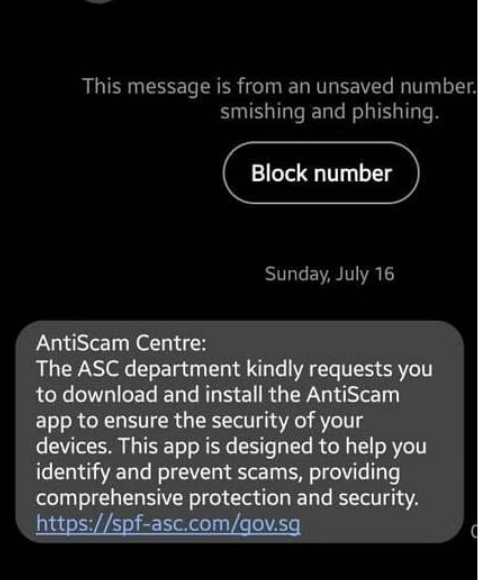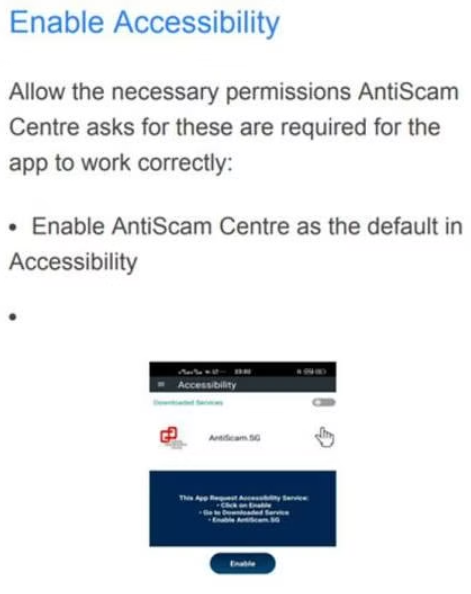There’s a multitude of scams out there right now. And they’re evolving.
In yesteryears, it was easy to identify a scam when you saw it. Cue the horrifically bad grammar, really personal intros and the awkward catfish profile pic. One would typically be able to see it at first glance, delete it and move on with their life.
But it’s different now. Scam ploys are looking more and more legit, with rectified grammar usage, more socially acceptable intros and more believable profile pictures. Even their impersonation tactics are advancing.
Which is why it’s imperative that you read this article.
There’s Now a Scam About an Anti-Scam App That Impersonates the Anti-Scam Centre
No, you didn’t read the headline wrong. Scammers are now using the Anti Scam Centre as a premise for their ploys.
100% audacity, 0% ethics.
So from the looks of it, the scammer would send you an SMS claiming to be from the Anti Scam Centre. They would ask you to download an anti-scam app that purportedly safeguards your device with its scam identification and prevention capabilities.

You’re prompted to click on a link in the SMS, and once you’ve done so, you’ll be brought to this dodgy ASC-looking site with yet another link. If you choose to download the app, you’ll be asked to permit access to your device.


That’s when the scammer takes control of your phone. Surprise.
It appears that Android users are the primary targets here, as the application is essentially an Android package kit (APK) file.
It’s not the first audacious attempt by scammers to impersonate an anti-scam organisation, though. Back in May, a fake Scamshield app emerged, pledging to protect you against scams.
Other Variations
It’s not just malware-based scams, either.
With the recent influx of significant stars, ticket-based scams have made a distinct comeback.
It’s common to purchase third-party concert tickets on platforms such as Carousell, Facebook, etc etc. Scammers would take advantage of this fact, posing as sellers and posting photos or videos of fake tickets to verify their authenticity. When they receive payment, however, they would disappear.

And in another variation, scammers would pose as buyers and approach sellers on social media platforms. Instead of conventional payment methods, the scammer would send an URL link or QR code to “pay”. Sellers would then be brought to a fake banking website, where they are prompted to key in their private credentials.

Meanwhile, Telegram scams have been prevalent of late as well.
The modus operandi of the scammers is to utilise Telegram groups which offer used items for free to cheat the victims of money.
The scammers pretend to offer items for free in exchange for the victim paying a delivery fee or goodwill deposit. Unfortunately, those who do pay these fees never see the items.
What You Can Do
In 2022 alone, scam victims here lost a staggering $660.7 million.
That figure eclipsed the $632 million lost in 2021.
There were also 31,728 scam cases in 2022, up from 23,933 in 2021.
If you wish to learn more about scams, you can either go to www.scamalert.sg or reach the Anti-Scam Helpline at 1800-722-6688.
Alternatively, if you have any relevant scam-related information, you can dial the police at 1800-255-0000 or submit it online at www.police.gov.sg/iwitness.




